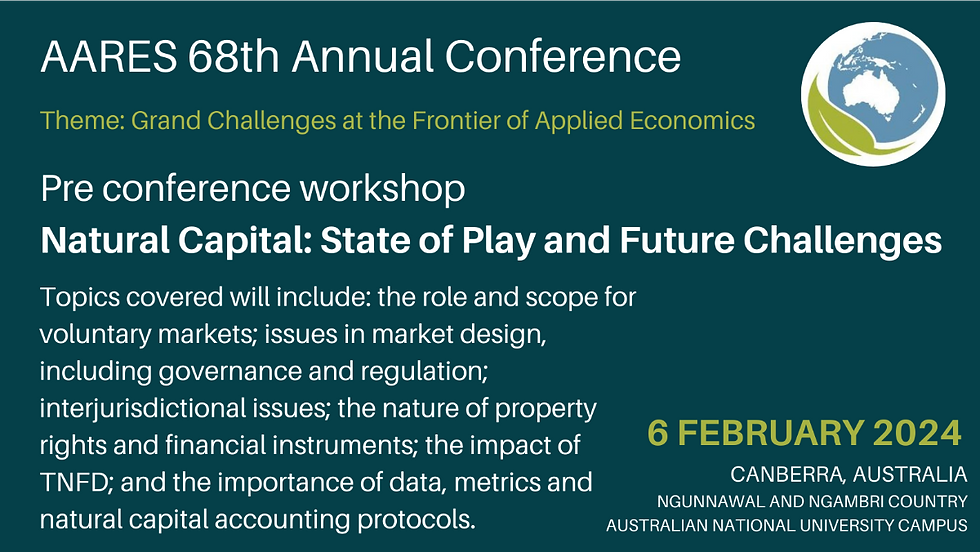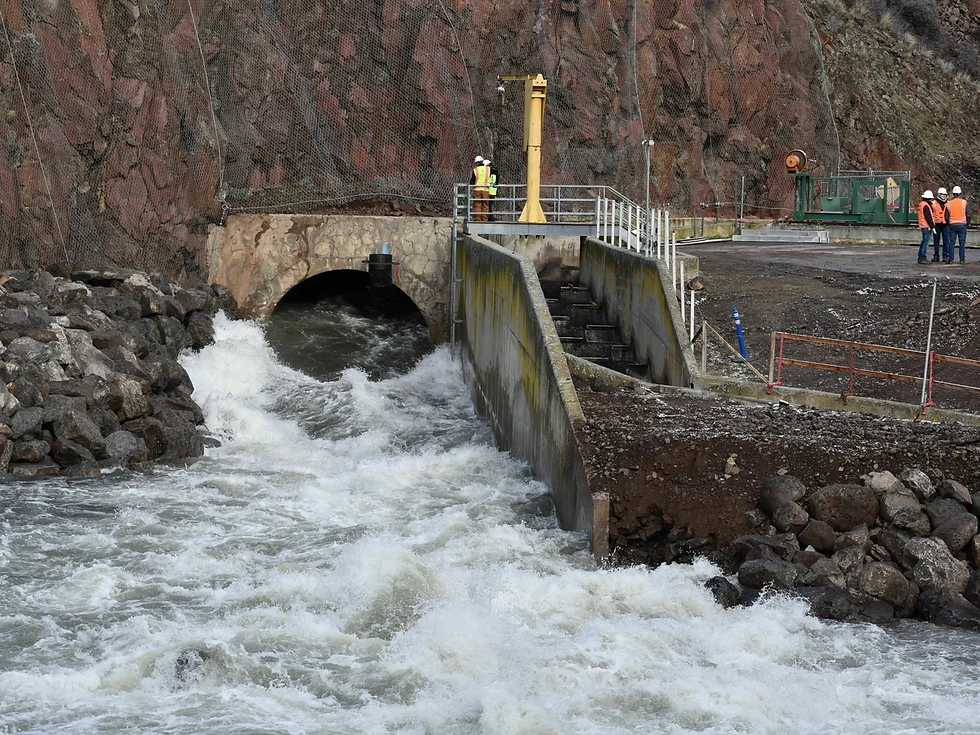The Latest Trending Economic, Environmental and Demographic News Curated for You By The Balmoral Group
The Balmoral Group provides practical, professional and precise Economics, Data Analytics, and Engineering Consulting services and is part of a globally integrated team.
Happy Friday!
This week’s edition of the Economic Perspective our economics team has compiled articles on the documentation of the largest deep-sea coral region off of Florida’s coast, warnings of blackouts with the retirement of coal plants as the industry transitions, machine learning to decode the environmental impact of the Clean Water Act, and more. Our data visualization shows added hope to softer landing for the U.S. GDP growth with the release of the Q4 2023 estimates from the Bureau of Economic Analysis (BEA). Our first article of this week’s edition however, highlights our Australia Office’s upcoming activities in February as our President and Principal Economist, Valerie Seidel, joins the team for the 68th Annual Australasian Agricultural Resource Economics Society (AARES) Conference in Canberra, AU. She will be presenting on Natural Capital in a pre-conference workshop. We’re excited to hear the team’s takeaways from the conference when she returns.
We hope you enjoy the read and let us know what you think! Please feel free to forward this to anyone you think would be interested. If you’d like to view previous editions please click here, or to subscribe please click here!
Natural Capital & the AARES Natural Capital Workshop
Natural capital is now at the forefront of policy thinking, with nature repair markets, natural capital investment, environmental finance and natural capital accounting on the policy agenda in various jurisdictions. Our Australian team is bringing a strong presence to the 68th Annual Australasian Agricultural Resource Economics Society (AARES) Conference in Canberra on the 6th Feb 2024. Director, Grant Leslie will be facilitating a one-day workshop as a prelude to the conference and our President, and Principal Economist, Valerie Seidel, will be joining the AU team to present on Natural Capital from the U.S. perspective.
So, What is Natural Capital?
The term natural capital is attributed to economist E.F Schumacher, who presented the concept in his 1973 book Small is Beautiful. There are many definitions of the term. A typical example is the one developed by the Natural Capital Coalition after a long consultative process: Natural capital is another term for the stock of renewable and non-renewable resources (e.g. plants, animals, air, water, soils, minerals) that combine to yield a flow of benefits to people. Discussing is topic important, as the World Bank estimates that the global economy could lose $2.7 trillion by 2030 if certain ecosystems collapse. Understanding the value of a country's environmental assets is the key to sustainable development and economic growth.


Grid Monitor Warns of Blackout Risks as Industry Transitions
A recent report by the North American Electric Reliability Corp. indicated that most regions in the U.S. face growing risks of inadequate electricity supplies during periods of extreme weather as demand for electricity rises more than electricity generation and transmission. Power demand is expected to grow 10% by 2032 as demand from data centers, crypto mining and EVs rise rapidly. On the other side, generation is expected to grow 4% as fuel and nuclear power plants close, while renewable sources not grow fast enough. E&E News

Largest Deep-Sea Coral Reef Identified Near Florida's Coast
The largest deep-sea coral mound region in the world has recently been documented off the coast of Florida, spanning an area three times the size of Yellowstone National Park. The high-density coral stretches for over 300 miles and is found at depths ranging from 656 to 3,280 feet. Scientists have known of coral in the area but the extent was not known until recently, thanks to new technology that allows scientists to map deep sea areas including sonar mapping and videos collected by submersibles. The depth of the reef protects it from challenges like coral bleaching, but it can still be affected by changing ocean temperatures and acidity. Read more at TCPalm.

Machine Learning Decodes Clean Water Act's Environmental Impact
The 1972 Clean Water Act lacks precise definitions for protected "waters of the United States," leading to presidential administrations, regulators, and courts to interpret. UC Berkeley researchers used machine learning to analyze 2020 Trump administration changes, revealing a 25% loss in Clean Water Act protection for U.S. wetlands and a 20% loss for streams. Additionally, 30% of watersheds supplying drinking water were deregulated. The study, published in Science, utilized a model predicting 150,000 Army Corps decisions, demonstrating the 2020 rule's impact on 690,000 stream miles and over $250 billion in flood prevention benefits from deregulated wetlands. The model, estimating annual savings of $1 billion, aids in understanding and navigating environmental policy complexities. Read more about the study here.

Largest Dam Removal in U.S. History Begins
The Klamath River will see the largest dam removal in US history, and with the lowering of the dammed reservoirs a critical phase has been passed. The dam has been opened to 36 inches allowing decades of sediment build up to flow through the river. This will allow for further removal of the dams which has blocked salmon, steelhead, and Pacific lamprey from accessing habitat and living in poor water quality. Klamath River was once the third largest salmon producer on the West Coast but since the dams this has declined to a fraction of their historical production. While some celebrate others have concerns over the loss of Copco Lake and its utility in helping fight wildfires. Read More.

Climate Language Poorly Understood
A recent survey within the U.K. in analyzing the public’s understanding of key climate terminology resulted in very surprising results. The majority of the public did not understand key terms such as “green”, “sustainable”, and “environmentally friendly” with a surprising 47% being confident in defining “single-use plastics”. It was shown that the age group between 18-24 years old understood, and could correctly define more terms than other age groups. Knowing terms for climate change is vital for the future of sustainability. Similar results could be expected in U.S. cities or regions based off the similarities between the U.S. and U.K., read more here .
Data Visualization of the Week
Q4 2023 GDP Estimate from BEA
According the BEA's preliminary estimates of the U.S. GDP for the last quarter 2023, the economy experienced annualized growth rate of 3.3 percent. This Q4 growth reveals a surprisingly strong 2023 that was originally expected to end in recession. These latest readings from BEA do reveal a slight deceleration from the revised 4.9 percent growth in the previous quarter but the original forecast were expecting a 2 percent growth for Q4. This strong GDP report was accompanied by the cooling of prices for the personal consumption expenditures, with the PCE index increasing at a rate of 1.7 percent for Q4 2023. The second revision to fourth quarter that is based on more complete data will be released February 28th, 2024. Read More from Statista & BEA



Comments